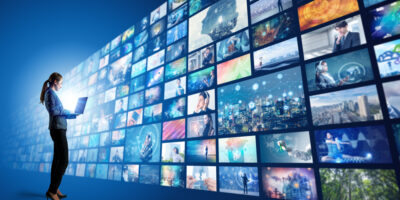Navigating Bisexual Identity in a Heteronormative Society
Navigating Bisexual identity in a heteronormative society can feel like embarking on an uncharted journey through a maze of assumptions and stereotypes. In a world that often sees sexual orientation as black or white, those who identify as bisexual find themselves caught in the gray area, constantly having to explain and justify their existence. This article aims to shed light on the struggles faced by individuals within the LGBTQ+ community, specifically exploring how bisexual individuals navigate their identities in a society that often fails to acknowledge or understand them.
Introduction to Bisexuality
Bisexuality, often overshadowed by the more widely known categories of homosexual and heterosexual orientation, is a unique and diverse sexual identity that deserves recognition and understanding. Unlike homosexuality, which refers to an exclusive attraction to the same sex, or heterosexuality, characterized by an exclusive attraction to the opposite sex, bisexuality encompasses an attraction to both genders. It is important to note that bisexuality exists on a spectrum; some bisexual individuals may feel equal levels of attraction towards both genders, while others may experience fluctuations in their preferences over time. This fluidity distinguishes bisexuality from its often misunderstood counterpart—pansexuality.
The concept of pansexuality can sometimes be misconstrued as synonymous with bisexuality due to their overlapping characteristics. While it is true that both orientations involve attraction towards multiple genders, what sets them apart is the focus of this affection. Bisexual individuals are typically attracted to males and females specifically and acknowledge gender as a factor in their attractions. On the other hand, those who identify as pansexual tend not to consider gender when forming romantic or sexual connections with others; instead, they prioritize qualities such as personality and compatibility.
Navigating bisexuality within a heteronormative society can be challenging for many individuals who find themselves caught between two worlds. Bisexual people often grapple with societal expectations that categorize relationships into clearly defined binaries: gay or straight. This limited perspective can lead bisexual individuals feeling erased or invalidated in their identities when faced with skepticism from peers
Understanding Sexual Orientation
Sexual orientation is a complex and varied subject that encompasses an individual’s emotional, romantic, and sexual attractions. While many people are familiar with the concepts of being heterosexual or homosexual, it is important to recognize and acknowledge the existence of bisexual individuals. Bisexuality refers to those who are attracted to both males and females, but often faces misconceptions or erasure in a heteronormative society.
To truly understand bisexuality requires recognizing that it is a valid sexual orientation in its own right. It is not a phase, confusion, or indecisiveness. Being attracted to more than one gender does not mean someone is greedy or promiscuous either. Bisexual individuals form deep emotional connections with people regardless of their gender identity.
Navigating through life as a bisexual person can be challenging due to the limited visibility and awareness surrounding this sexual orientation. That’s why it’s crucial for society to provide resources and support for bisexual individuals. This includes online communities where they can connect with others who share similar experiences, as well as access to information about bisexuality. By understanding the essence of bisexuality—its complexities, struggles, and beauty—we can work towards building an inclusive society that embraces diversity in all its forms.
Navigating Bisexual Identity in a Heteronormative Society
In order to understand sexual orientation, it’s essential to recognize that not everyone fits neatly into the boxes society constructs for them. The concept of queerness challenges traditional notions of attraction and love by acknowledging the spectrum of possibilities beyond heterosexuality. Within this broad landscape, bisexuality stands as one particular identity that often faces misconceptions and stereotypes.
One common myth surrounding bisexuality is the notion that it reflects indecisiveness or confusion about one’s attractions. However, this assumption fails to acknowledge the validity and complexity of bisexual experiences. Bisexuality simply means an ability to feel emotional, romantic, or sexual attraction towards more than one gender. It does not infer vacillation or uncertainty; rather, it affirms the fluidity and diversity inherent in human sexuality.
Another misconception is that bisexuality reinforces a binary understanding of gender—that individuals attracted to multiple genders necessarily perpetuate fixed ideas about male and female distinctions. The truth is quite different: being attracted to diverse genders offers an opportunity for bi individuals to challenge rigid gender norms and explore connections free from preconceived expectations. By embracing their own multifaceted attractions, bisexual individuals inherently promote inclusivity and acceptance within wider society.
By unraveling these myths surrounding bisexuality, we can foster greater understanding and appreciation for diverse experiences along the sexual orientation spectrum. It is crucial for society at large to recognize that sexual orientations are complex and nuanced, existing on
Exploring Bisexuality
Navigating one’s identity as a bisexual in a heteronormative society can be both challenging and liberating. For individuals questioning their sexual orientation, it is important to have access to reliable resources that provide education and support. There are numerous online platforms and organizations dedicated to empowering the bisexual community by offering information on coming out, building healthy relationships, and understanding the intricacies of bisexuality.
Bisexuality is often misunderstood or overlooked in conversations about sexuality. It is crucial to acknowledge that bisexuality is not simply being attracted to both men and women; rather, it encompasses a spectrum of attractions towards multiple genders. Understanding this definition can help challenge the stereotypes that perpetuate myths about bisexuality. By embracing this fluidity, individuals can explore their identities with confidence while also educating others about bisexuality’s diversity.
One reason why exploring bisexuality can be intriguing is due to the unique experiences it brings forth. Unlike those who identify as strictly heterosexual or homosexual, bisexuals often navigate a world of hidden desires and societal pressure for binary choices surrounding love and relationships. This facet adds depth to personal journeys of self-discovery as many bisexual people find empowerment in embracing their multifaceted attractions.
Navigating bisexuality in a heteronormative society demands resilience but also offers an opportunity for growth and strength-building. Engaging with communities of likeminded individuals provides invaluable support throughout this journey, fostering connections with others who truly understand the unique joys and challenges faced
What do the bisexual flag colors mean?
The bisexual flag, with its vibrant and eye-catching colors, is a powerful symbol of visibility and pride for the bisexual community. Each color holds its own significance, reflecting different aspects of the bisexual experience. The pink stripe represents same-sex attraction, while the blue represents opposite-sex attraction. These two colors are interconnected by a purple stripe in the center, symbolizing bisexuality as an orientation that encompasses both genders.
However, the flag’s meaning goes beyond just representation of desire. It also serves as a statement against isolation and invisibility faced by bisexual individuals in our heteronormative society. For many bisexual women, coming out can be an ongoing process marked by challenges such as stereotypes, erasure, and misconceptions about their identity. The flag serves as a beacon of support and validation for those navigating these complexities.
By proudly displaying the bisexual flag colors or wearing it as fashion accessories like pins or bracelets, individuals express their pride in their sexuality while inviting conversations around bisexuality. Empowering messages behind the flag inspire discussions on intersectionality within the LGBTQ+ community, emphasizing inclusivity and breaking down binaries that limit identities to only one gender or expression of desire.
In conclusion, understanding the meanings behind each color in the bisexual flag allows us to appreciate its significance beyond aesthetics. By embracing this symbolic representation wholeheartedly and spreading awareness about what it stands for—visibility, acceptance, inclusion—we can collectively create a more inclusive society for all members of the LGBTQ+ community.
Common Myths and Stereotypes about Bisexuality
It is essential to address the common myths and stereotypes surrounding bisexuality in order to navigate the complexities of a heteronormative society. One prevalent myth is that bisexuality is a phase or an experimentation. This misconception undermines the validity of bisexual identity by assuming that it is less stable or legitimate compared to other sexual orientations. However, just like any other sexual orientation, bisexuality is not something one can merely move on from; it is an integral part of who a person is.
Another pervasive stereotype about bisexuality relates to promiscuity. It falsely assumes that individuals who identify as bisexual cannot be monogamous or committed in relationships. This belief disregards the individuality and agency of bisexual people, reducing them to mere sexual beings rather than fully-formed individuals capable of forming lasting bonds with their partners.
Bisexual identities are complex and unique, and they deserve recognition and respect within our society. By challenging these myths and stereotypes, we can create a more inclusive world for all individuals irrespective of their sexual orientation. It’s important for people to educate themselves about bisexuality through reliable resources discussing its definition, experiences faced by the community, as well as personal accounts shared by those who identify as bisexual.
By dispelling these misconceptions surrounding bisexuality, we can foster greater acceptance and understanding within our communities. Embracing diversity in all its forms enriches our collective experience, supporting a more inclusive society for everyone regardless of their sexual orientation or gender identity
Bisexual Identity and Self-Acceptance
One of the biggest challenges that bisexual individuals often face is navigating their identity in a heteronormative society. Bisexual orientation is still surrounded by many myths and misconceptions, which can make it difficult for individuals to fully embrace and accept their identity. Society often perpetuates the idea that bisexuality is simply a phase or that individuals cannot be attracted to both men and women equally. This invalidation of bisexual experiences can greatly impact self-acceptance and lead to feelings of confusion and isolation.
However, it’s important for individuals who identify as bisexual to challenge these myths and embrace their true selves. Self-acceptance begins with education—educating oneself about what it means to be bisexual, understanding its nuances, and debunking the stereotypes associated with this orientation. By gaining knowledge about bisexuality, one can become more confident in their identity and dismiss any doubts or insecurities caused by societal pressures.
In addition to educating oneself, seeking out community support plays a vital role in self-acceptance for bisexual individuals. Connecting with others who share similar experiences can provide a sense of validation and belonging. Joining local LGBTQ+ organizations or attending pride events can create opportunities to meet like-minded individuals who have faced similar struggles on their journey toward self-acceptance. Building friendships within the community allows for shared experiences, advice, encouragement, and empowerment – all elements essential in fostering self-acceptance. Self-acceptance is an ongoing process that requires continuous effort. It’s important for those identifying as bisexual to
Building Supportive Communities for Bisexual Individuals
Building supportive communities for bisexual individuals is of utmost importance in a heteronormative society. These communities not only provide a safe space for bisexual individuals to express themselves and their identities, but they also play a crucial role in combating the stigma and erasure that so often affects this group.
One way to foster these supportive communities is through education and awareness. Many people still hold misconceptions about bisexuality, viewing it as a phase or denying its existence altogether. By organizing workshops, panels, and discussions on bisexuality, we can help dispel these myths and promote understanding.
Furthermore, reaching out to other marginalized communities can be incredibly powerful. Both the LGBTQ+ community and the general population need to unite in support of bisexual individuals. It’s crucial for gay or lesbian activists to acknowledge that bisexuality is not a stepping stone or an inability to pick a side, but rather an authentic sexual orientation with unique challenges.
In conclusion, building supportive communities for bisexual individuals requires education and awareness as well as unity among marginalized groups. Providing safe spaces where bisexuality can be celebrated without judgment helps combat the erasure experienced by this group every day in our heteronormative society
Addressing Biphobia and Bi Erasure
Biphobia and bi erasure are two significant challenges that bisexual individuals often face in a heteronormative society. Biphobia refers to the prejudice, discrimination, or negative attitudes towards individuals who identify as bisexual. It manifests in various forms, from stereotypes portraying bisexuality as attention-seeking or promiscuous to invalidating comments like bisexuality is just a phase or you’re either gay or straight. This marginalization creates an environment where bisexuality is seen as less valid or legitimate than other sexual orientations.
Bi erasure goes hand in hand with biphobia and refers to the systematic erasure of bisexuality through denial, dismissal, and invisibility. Bisexual individuals often find their experiences invalidated by both the heterosexual and LGBTQ+ communities. Heteronormative society tends to perpetuate the idea that one can only be attracted to either men or women, while some parts of the LGBTQ+ community may view bisexuality as not being queer enough. The constant questioning of their identity and relationships can lead to feelings of isolation and confusion for bisexual individuals.
Furthermore, addressing this issue requires raising awareness about biphobia and bi erasure within both mainstream society and LGBTQ+ communities. It demands recognizing that bisexuality is a valid sexual orientation deserving respect, representation, and inclusivity. Education plays a crucial role in dispelling misconceptions about bisexuality and challenging prejudices against it. By highlighting diverse narratives of bisexual individuals’ experiences through media representation, literature,
Resources and Support for Bisexual Individuals
Bisexual individuals often face unique challenges in a society that tends to operate within a heteronormative framework. Fortunately, there are a variety of resources and support systems available to help navigate this complex journey of self-discovery and acceptance.
One invaluable resource for bisexual individuals is the vibrant and inclusive online communities that have emerged in recent years. These communities provide a safe space for people to connect with others who share similar experiences, offering validation and support. From online forums to social media groups, these virtual spaces allow bisexual individuals to express themselves without fear of judgment or misunderstanding.
It is also important for bisexual individuals to educate themselves about the prevalent myths surrounding their sexual orientation. Bisexuality is often misunderstood as being confused, promiscuous, or attention-seeking. By arming themselves with accurate information, they can confidently debunk these myths when confronted with ignorance or prejudice. Educational resources such as books, articles, podcasts, and documentaries can provide valuable insights into bisexuality’s rich history and diverse experiences.
In conclusion, navigating bisexual identity in a heteronormative society can be challenging but not insurmountable. The presence of supportive online communities coupled with accessible educational resources helps empower bisexual individuals on their ongoing journey towards self-acceptance and understanding. By utilizing these resources effectively, they can build meaningful connections while challenging societal norms that seek to marginalize their existence.
Conclusion
In conclusion, embracing and navigating a bisexual identity in a heteronormative society can be challenging but ultimately liberating. It is imperative for individuals to educate themselves about bisexuality definitions, as well as seek out relevant resources that provide support and guidance. By doing so, they are better equipped to navigate the complexities of their identity and find solace within their community.
Moreover, it is essential to remember that human sexuality exists on a spectrum, rather than being confined to strict binaries. Bisexuality is not just a phase or an indecisive mindset; it is valid and deserving of recognition. Society must evolve and recognize the diversity within sexual identities, working towards creating inclusive spaces where individuals feel comfortable expressing their true selves.
In conclusion, whether you personally identify as bisexual or simply seek understanding in order to support someone you care about, learning about bisexuality will open doors for empathy and acceptance. Bisexual individuals deserve validation and recognition in a heteronormative world that often dismisses them. Through education and discourse on this subject, we can challenge societal norms while celebrating the beauty of diverse sexual identities.

















